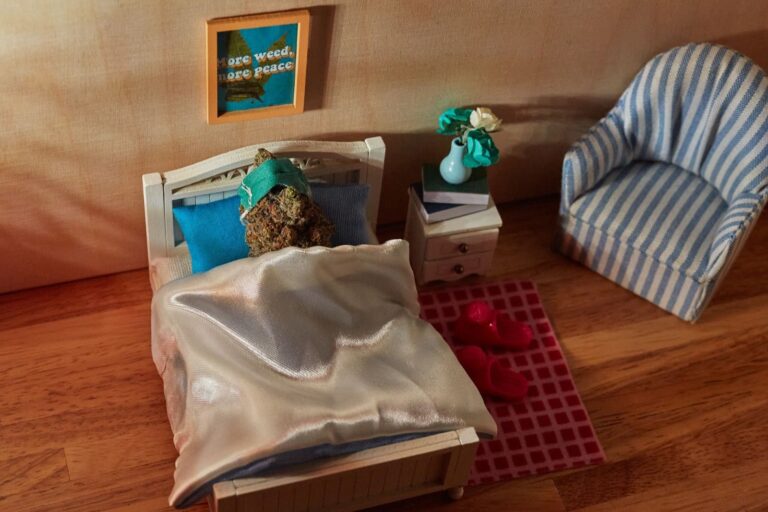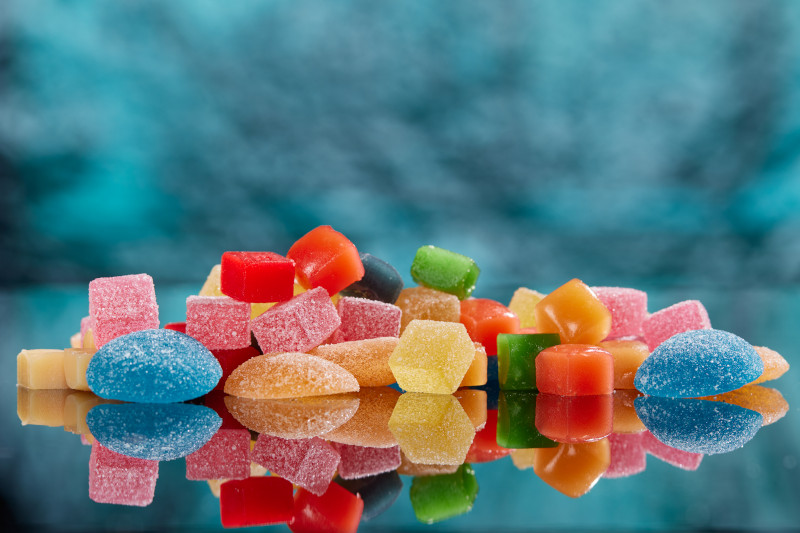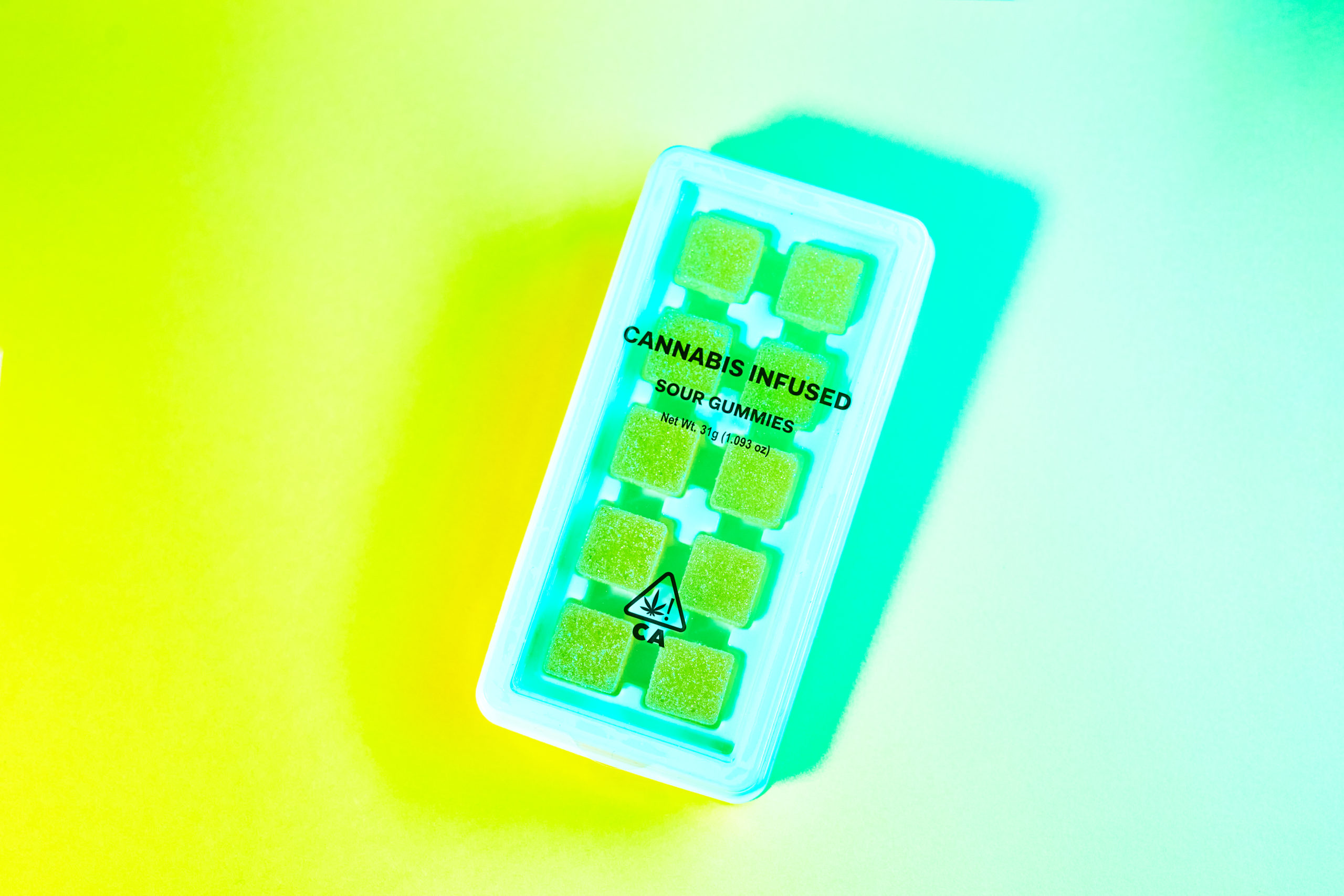We've all been there — lying in bed restless, mind racing, watching the clock slowly tick away as we struggle to get the lasting sleep we desperately need. It may not always happen — though for some people, it does — but when sleeplessness strikes, it can derail an entire day or week. That's why many people search for remedies. In fact, that's what brings many people to see Dr. Bonni Goldstein, who has treated thousands of patients with cannabis medicine.
Goldstein, the medical director for Canna Centers, CEO of Goldstein Wellness, and a medical advisor to Weedmaps, routinely works with people struggling with sleep issues. Goldstein says that cannabis can often be helpful for sleep, though every person's body chemistry varies and many factors — like dosage, strain, and onset time — can impact a person's sleep quality.
When it comes to gummies and other edibles, Goldstein's guidance is simple: “Start low, and go slow.”
We chatted with Goldstein and consulted leading research to learn more about how gummies impact sleep, how cannabis works in the body, and the best ways to safely use edibles as a sleep aid.

Image lightbox

Why cannabis gummies are a popular sleep aid
Gummies are popular for good reason. They're easy to ingest, and unlike smoking or vaping, you can easily add them to your nighttime routine and consume them discreetly before you hop into bed.
Moreover, gummies are dose-controlled. If you want to take precisely 10 milligrams of THC gummies or CBD products, it's easy to be sure you're getting the correct dosage. And because of their taste and texture, gummies go down relatively easily without any coughing or discomfort. So, for folks interested in using cannabis as a sleep aid, gummies are often among the most popular choices.
How cannabis gummies work in the body
Cannabis gummies work by interacting with the endocannabinoid system (ECS), which has receptors throughout the body. Its goal is to maintain balanced messaging, or homeostasis, in response to internal or external changes. In periods of high stress, the system will produce endocannabinoids to regulate itself, but sometimes it struggles to do so independently. That's where cannabis comes in.
“Your body cranks out its own endocannabinoids in response to a trigger,” Goldstein said. “It's part of our evolutionary survival mechanism. But when you don't make enough of your own endocannabinoids or your system is taxed, the whole idea of medical cannabis is to augment or enhance your system.”
When you use tetrahydrocannabinol (THC) (the main psychoactive compound in cannabis), it binds directly to endocannabinoid receptors in the body. In contrast, cannabidiol (CBD) binds to a “side site” on those receptors, and in higher doses, can be calming, Goldstein says.
Cannabinol (CBN) is an oxidation product of THC, which means it is formed as THC breaks down over time, and it is typically present at lower levels in cannabis. Some research has indicated that CBN has sedative properties that can reduce nighttime awakenings and promote deep sleep.
If one is using cannabis gummies for sleep, they should be aware that edibles take time to kick in. “We all have a range in absorption and metabolism,” Goldstein says. “There is a delay in onset when you take cannabinoids orally.” The onset is typically between one and two hours, though Goldstein notes it can vary depending on a person's diet (eating a high-fat diet, for instance, can increase absorption).
THC and sleep: what the research says
While there has historically been a dearth of research on cannabis products, several recent studies are shedding light on their impact on sleep. According to a study published in 2021 by the journal Sleep, medical cannabis was found to improve insomnia in a group of subjects who used it nightly over a two-week period. Compared to a placebo group, those who used cannabis reported an increased sleep quality.
Moreover, a 2022 meta-analysis published in the journal Sleep Medicine Reviews looked at a series of sleep trials and found that cannabinoids are associated with improvements in general sleep. More specifically, a paper from the American Society for Experimental Neurotherapeutics found “a potential therapeutic role” for cannabinoids in managing sleep disorders. It also found that for non-chronic users, THC can increase total sleep time and suppress rapid-eye-movement (REM) sleep, while those with a high tolerance see less-pronounced improvements.
“If you find that THC-dominant cannabis is working and then it stops working, you may have built tolerance,” Goldstein says. “Taking 48 hours off can help reset.”
 Photo by: Gina Coleman/Weedmaps
Photo by: Gina Coleman/WeedmapsImage lightbox

Choosing the right cannabis gummies for sleep
If one is thinking about using cannabis gummies as a sleep aid, it's important to consider a range of factors, including:
- Cannabinoid profile (THC, CBD, CBN)
- Ingredients
- Dose
- Strain
- Classification (indica, sativa, hybrid)
For instance, a consumer will want to evaluate THC compared to CBD. Are they looking for a psychoactive compound or a non-intoxicating gummy?
While both may be helpful sleep aids, it's worth considering the extent to which one wants their body and mind to feel high. Some products combine cannabinoids to create an entourage effect, where compounds work together synergistically.
It's also important to choose a strain that will be an effective sleep aid. While Goldstein doesn't endorse particular products, she notes that cannabis products designed for sleep are typically indica strains, with Granddaddy Purple being a common strain. Terpenes — aromatic compounds found in cannabis — can also play a role in promoting relaxation and restful sleep.
Consumers should also pay careful attention to the ingredients in any edible cannabis product. While gummies include cannabis extract (whether hemp-derived or cannabis-derived), they also typically include sweeteners, flavorings like natural flavors, citric acid, and a thickener. Many consumers enjoy seeking out high-quality products made from organic or natural ingredients.
Like any edible product, a consumer must read the label to understand exactly what you're ingesting.
Product labels on gummies can vary, but one should always look for the total amount of THC in the container, the amount of THC per serving (i.e., how much is in each gummy), the serving size, as well as the total active cannabinoids, which gives the consumer an idea of the breakdown of THC, CBD, and other cannabinoids.
It's also important to understand the freshness of the product by looking for dates that indicate when the gummies expire.
Safe and mindful use of cannabis gummies
If a user is trying cannabis gummies for the first time, the “start low, and go slow” mantra is a good one to live by. Goldstein notes that most of her patients are using low-dosage THC products, meaning they're taking less than 20 milligrams. But for someone who has never experimented with cannabis, starting with an even lower dose (say, 2.5 to 5 milligrams) may be a safer starting point.

Image lightbox

Keep in mind, edible cannabis products can take an hour or more to kick in. Timing one's dosage accordingly for optimal effect is key. It may require some trial and observation.
Tips for integrating gummies into a sleep routine
Cannabis gummies work best when they're part of a broader sleep hygiene routine, not used as a standalone solution. Consumers should consider these complementary practices:
- Time it right: Take your gummy one to two hours before your desired bedtime to account for the delayed onset
- Stick to a schedule: Maintain consistent sleep and wake times, even on weekends
- Optimize your environment: Keep your bedroom cool, dark, and quiet
- Limit screen time: Avoid phones, tablets, and TV in the hour before bed
- Watch your caffeine: Cut off caffeine consumption by early afternoon
- Keep it simple: Don't use other sleep products in conjunction with cannabis without consulting a medical professional
- Try relaxation techniques: Pair your gummy with meditation, gentle stretching, or reading
- Track your results: Keep a simple sleep journal to note what works and what doesn't
Goldstein also stresses that while cannabis can be a helpful part of a sleep routine, if one is taking other medications, they should consult a medical professional. “You should always double-check with a cannabis-knowledgeable practitioner at least once to run your medications,” she says.
Final considerations for new users
While edible cannabis products have emerged as a potential sleep aid, they are not the only option available. Over-the-counter options like melatonin, doxylamine, and valerian can also improve sleep, but they interact with the body differently — only cannabinoids work through the ECS. It's important to consult a medical professional about how gummies might interact with products like these.
While there are no guaranteed outcomes when using cannabis products for sleep — and more research is needed — it is an increasingly popular practice. According to a survey from the Sleep Foundation, 77 percent of men and 64 percent of women surveyed between ages 21 and 64 have used cannabis to help with sleep, with gummies being the most commonly used form.
If a consumer is considering using gummies, consider the various factors — like dosage, strain, and onset time — before purchasing, and always track results! Some users may experience mild side effects like drowsiness the next day or feeling groggy, so it's important to start with a low dose and adjust as needed.
Disclaimer: The information contained in this site is provided for informational purposes only, and should not be construed as medical or legal advice. This page was last updated on Oct 31, 2025.




